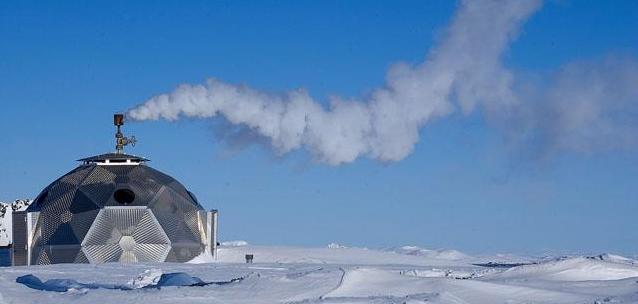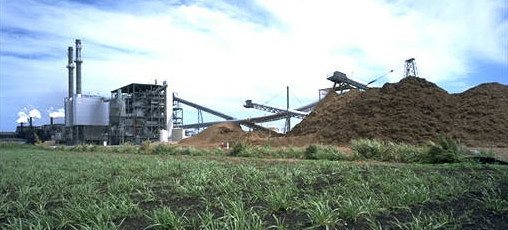“Renewable energy sources are energy sources that are continually replenished. These include energy from water, wind, the sun, geothermal sources, and biomass sources such as energy crops. In contrast, fuels such as coal, oil, and natural gas are non-renewable. Once a deposit of these fuels is depleted it cannot be replenished – a replacement deposit must be found instead.
“Renewable sources of energy vary widely in their cost-effectiveness and in their availability across the United States. Although water, wind, and other renewables may appear free, their cost comes in collecting, harnessing, and transporting the energy so that it can do useful work. For example, to utilize energy from water, a dam must be built along with electric generators and transmission lines.
“Renewables themselves are non-polluting, while the structures built to harness them can have positive or negative environmental impacts. For example, dams may affect fish migration but may also create wildlife habitat.” – nationalatlas.gov
So lets take a brief look at a few different renewable energy sources to weigh the options.
Hydropower
Hydropower refers to the use of water to generate electricity and it’s the most common renewable energy source used in the US today. Hydropower is produced by building dams to harness the power which have their own sets of concerns, namely fish migration and flooding, but also provide many benefits like recreational opportunities, diversion for irrigation, and new wildlife habitat. Learn More.
Wind Power
Small windmills have been used for hundreds of years to pump water or grind grain. Now, large modern wind turbines are used to generate electricity on a far greater scale. Wind power is the world’s fastest growing energy technology and supplies about 1% of the United States’ energy needs. While wind power benefits the environment by creating electricity without any pollution, its negative impacts include wildlife deaths and noise pollution. With proper site planning and improved engineering these impacts are slowly being eliminated. Learn More.
Solar Power
Solar technologies use the sun’s energy to provide heat, light, hot water & electricity for homes, businesses, and industry. Despite sunlight’s significant potential for supplying energy, solar power currently only provides less than 1% of U.S. energy needs. There are several means by which to collect solar power for different uses all of which produce few negative environmental impacts. Despite the production of collectors and storage devices for solar power, solar cells and equipment needed to convert the power can be very expensive. Before converting to solar power, one must also consider the amount of sunlight and daylight hours available to collect the power. Learn More.
Geothermal Power
Geothermal power is fueled by natural sources of heat (steam or hot water) from underground. It produces few emissions and has a continuously available power source. Geothermal power is mostly used to provide hot water, heat or electricity. While it is very efficient, reliable and eco-friendly, it currently meets less than 1% of US power needs. Learn More.
Biomass Power
Biomass power is obtained from the energy in plants and plant-derived materials such as such as food crops, grassy and woody plants, residues from agriculture or forestry, and the organic component of municipal and industrial wastes. Biomass accounts for an important part of the US waste-management infrastructure and is the second most important source of renewable energy in the US today. Biomass can be used for direct heating (such as burning wood in a fireplace or woodstove), for generating electricity or it can be converted into liquid fuels to meet transportation energy needs.
Biomass Power (also known as Biopower) produces fewer pollutants that equivalent fossil fuel power facilities and also “recycles” atmospheric carbon, which may reduce global warming impacts. While it does reduce emissions and pollutants, bomass crops can reduce biodiversity and impact wildlife habitats. As with all renewable resources, using appropriate technology will promote the best eco-impacts. Learn More.
While you may not be ready or able to convert your energy consumption to a renewable source, there are many services in the area that can help you lessen your carbon footprint, and save money on your power bills. One of the Trashion Show 2014 sponsors, Next Step Living, provides home energy evaluations and options for making your home more efficient.
Sources:
National Atlas
Nationalgeographic.com






I work for Bridgeport Board of Education, I am planning a recyclable event at the school I work. This is an event for parents and children, they will work together to create a project made out of recyclable materials. This event is in a school area of low income families. The objective of this event is to educate our families about recycling in a fun way. Is this something you would get involved with?